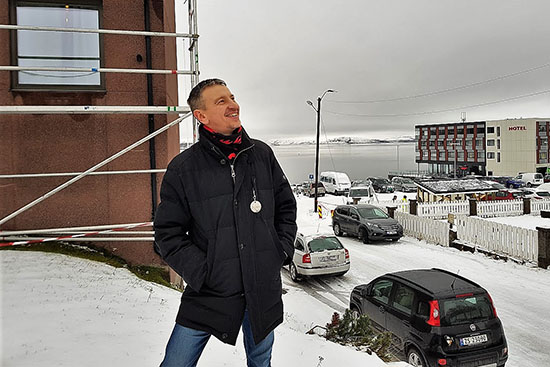“Barents cooperation is Arctic collaboration at its best, in its most practical form. Our perspective is that of the people living in the north, not the viewpoint of the capitals”, says Roman Gokkoev, Executive Officer at the International Barents Secretariat.
Barents regional cooperation opened formally 25 years ago, in the enthusiasm that followed the end of the Cold War. The name comes from the Barents Sea, part of the Arctic Ocean located off the northern coasts of Norway and Russia. In addition to Northwest Russia and Northern Norway, the regional and governmental cooperation covers Northern Sweden as well as Northern and Northeast Finland.
For the past 10 years, the International Barents Secretariat IBS has provided support for the various multilateral activities coordinated within the framework of the official cooperation in the Barents Regional Council and the Barents Euro-Arctic Council. Roman Gokkoev is the only Finnish representative in the multinational IBS staff.
Roman Gokkoev proudly cites Barents success stories, from transport corridors to environmental protection achievements.
“The new bridges or the recovery in the environmental hot spots are concrete results of agreements signed between neighbours. Progress may feel slow, but real improvements are taking place.”
New traffic infrastructure projects were announced just a couple of weeks ago, but overall, the mood is not as optimistic as it was two decades ago. International sanctions against Russia have polarised opinions.
”Our mission is to melt the ice in the north,” Roman Gokkoev grins.
“Luckily, EU still provides funding for projects dealing exclusively with cross-border cooperation and civil society. The relaunching of the Kolarctic CBC programme is very good news for us.”
“At the IBS, we are neutral; we let people voice contradicting opinions. We work in thematic working groups. We do not discuss security, military cooperation or even the freedom of speech. We promote cooperation in the fields of traffic and transport, culture and the environment.”
Roman Gokkoev himself is the embodiment of Barents cooperation. Born in the Republic of Karelia, he joined the summer school of Barents Association of Student Unions on Hailuoto Island in Finland as a representative of the Petrozavodsk University.
“That was in 1996, and it was the beginning of my life in Oulu, Finland. I can say that the structures created in the 1990’s have formed my career. For ten years, I worked for the Council of Oulu region. Now I am working in the heart of Barents cooperation in Kirkenes, Norway. I am lucky to earn my living promoting cross-border cooperation.”
His tasks include communicating the Barents ideals and the great things resulting from the cooperation. He is also involved in the work for the continuing development in the region.
According to Roman Gokkoev, business cooperation within the Barents region is lively. Many companies prefer working with partners that deal with similar challenges. In the capitals, the officials do not always understand the daily realities of living in the north. The national level is also important for cross-border cooperation, though, as governments make the decisions.
“The whole point is that we cooperate both at the national and the regional levels.”
For Roman Gokkoev, Arctic is a hazy concept.
“Arctic cooperation takes place at the higher levels. Officials plan for a distant future. I do not even know exactly who are involved. Barents is a tangible cooperation area; we are working here and now. We must make sure that people can continue to live in the region.”
He admits that it is hard for the Barents region to stand out in Arctic cooperation.
“Yet in terms of population, Barents is a distinct population cluster, with four countries and their indigenous peoples. We have sustainable structures and a long tradition of collaboration that started already with the North Calotte Council.”
Nordic cooperation is an excellent example of how easy it can be for people to cross national borders. Roman Gokkoev believes that practical joint action is the best way of keeping the northern communities liveable.
Photos © Anna Kuznetsova /IBS
